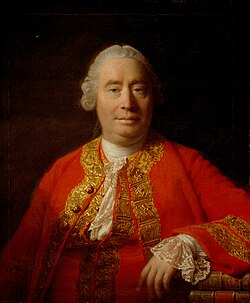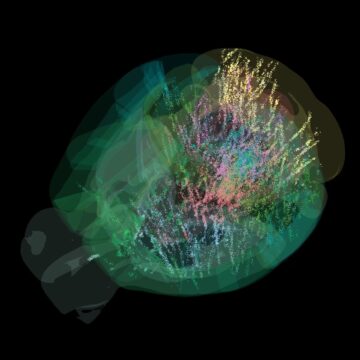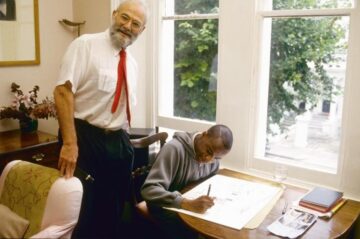Brad East at the Hedgehog Review:
 UFOs exist. On that we can all agree. The question is not whether they are but what they are.
UFOs exist. On that we can all agree. The question is not whether they are but what they are.
The same is true for all numinous experiences, or, better, encounters. People have them. They have always had them. The issue, therefore, is not their reality but the nature of their reality.
In itself, there is nothing odd or extraordinary about the existence of life, including intelligent life, elsewhere in the universe, beyond Earth. From the perch of any other globe, we ourselves would count as “extraplanetary” life. Such a discovery would be, by comparison with the discovery of a new species in the ocean, a difference in degree, not in kind.
What makes reports of encounters with extraterrestrial life—as with religious studies scholar D.W. Pasulka, we’ll place these under the umbrella term “the phenomenon”—feel remarkable, then, is not the bare facts. It’s the social stigma, for starters: Such things are not supposed to happen; believing that they do makes you a quack or some kind of religious fanatic. It’s also the character of the phenomenon. Encounters are never run-of-the-mill. By turns, they effect paralysis, induce lost time, stupefy witnesses, facilitate self-knowledge, or illuminate the mind.
more here.
Enjoying the content on 3QD? Help keep us going by donating now.

 Molly Moscatiello, age 7, started riding her bike to first grade last year. There’s a crosswalk with no crossing guard, “and I had to look both ways like five times,” she says, two grown-up teeth peeking through the gap in the front of her smile. Sometimes her parents’ friends would drive past and ask if Molly needed a ride, but she’d always wave them off. “I felt a little nervous at first,” she says. “But then after a while I felt comfortable by myself.” Soon, other kids began asking to ride their bikes to school. By the end of first grade, Molly was leading a small cohort of five or six, riding to school together in Little Silver, N.J.
Molly Moscatiello, age 7, started riding her bike to first grade last year. There’s a crosswalk with no crossing guard, “and I had to look both ways like five times,” she says, two grown-up teeth peeking through the gap in the front of her smile. Sometimes her parents’ friends would drive past and ask if Molly needed a ride, but she’d always wave them off. “I felt a little nervous at first,” she says. “But then after a while I felt comfortable by myself.” Soon, other kids began asking to ride their bikes to school. By the end of first grade, Molly was leading a small cohort of five or six, riding to school together in Little Silver, N.J. The cover of “Man’s Best Friend” features a photo of Carpenter wearing heels and a black cocktail dress, on her hands and knees, before a faceless man who clutches a fistful of her hair. The image consciously hints at porn (the set includes beige wall-to-wall carpeting and heavy white drapes, as if Carpenter were crawling through a Motel 6) and sexual submission, particularly when paired with the album’s title. Reactions were swift and high-pitched. People tend to find the union of sex and violence—or sex and willing subjugation—either fun and titillating or gruesome and catastrophically sinful.
The cover of “Man’s Best Friend” features a photo of Carpenter wearing heels and a black cocktail dress, on her hands and knees, before a faceless man who clutches a fistful of her hair. The image consciously hints at porn (the set includes beige wall-to-wall carpeting and heavy white drapes, as if Carpenter were crawling through a Motel 6) and sexual submission, particularly when paired with the album’s title. Reactions were swift and high-pitched. People tend to find the union of sex and violence—or sex and willing subjugation—either fun and titillating or gruesome and catastrophically sinful. It is hard to find a philosopher who writes well. One can list the good stylists on one hand:
It is hard to find a philosopher who writes well. One can list the good stylists on one hand:  In this clever book, Stuart Jeffries starts out at a double disadvantage, though. First: he has an excellently snappy title but it’s open to question whether stupidity can be said to have a history in any meaningful sense. The quality of stupidity is just, sort of, there; and there’s lots of it. Could you write a history of happiness, or bad luck, or knees? You’d be on firmer ground, as he recognises, historicising the concept of stupidity: a short history, in other words, of “stupidity” – how successive societies and thinkers have defined and responded to reason’s derr-brained secret sharer. As an intellectual historian who has written smart and chewy popular books about the Frankfurt School (Grand Hotel Abyss) and postmodernism (Everything, All the Time, Everywhere), he certainly has the chops for it.
In this clever book, Stuart Jeffries starts out at a double disadvantage, though. First: he has an excellently snappy title but it’s open to question whether stupidity can be said to have a history in any meaningful sense. The quality of stupidity is just, sort of, there; and there’s lots of it. Could you write a history of happiness, or bad luck, or knees? You’d be on firmer ground, as he recognises, historicising the concept of stupidity: a short history, in other words, of “stupidity” – how successive societies and thinkers have defined and responded to reason’s derr-brained secret sharer. As an intellectual historian who has written smart and chewy popular books about the Frankfurt School (Grand Hotel Abyss) and postmodernism (Everything, All the Time, Everywhere), he certainly has the chops for it. In 2025,
In 2025,  Every generation thinks it’s witnessing humanity’s moral collapse. New York Times columnist
Every generation thinks it’s witnessing humanity’s moral collapse. New York Times columnist  “The personal is the political” was a reality for me long before it became the mantra of Second Wave feminism in the United States. In 1951, when I was ten years old, my father, Samuel Wallach, a New York City high school teacher, was suspended from his job for refusing to cooperate with an investigation into communism in the public schools. He was fired for insubordination two years later—one of some 350 teachers who were fired or resigned in those years.
“The personal is the political” was a reality for me long before it became the mantra of Second Wave feminism in the United States. In 1951, when I was ten years old, my father, Samuel Wallach, a New York City high school teacher, was suspended from his job for refusing to cooperate with an investigation into communism in the public schools. He was fired for insubordination two years later—one of some 350 teachers who were fired or resigned in those years. During these first nine months
During these first nine months UFOs exist. On that we can all agree. The question is not whether they are but what they are.
UFOs exist. On that we can all agree. The question is not whether they are but what they are. Brakhage virtually invented and singularly dominated the characteristic genre of American avant-garde cinema: the crisis film, that lyric articulation of the moods and observations of the filmmaker, following a rhythmical association of images without a predetermined scenario or enacted drama. Since the early ’60s he handpainted on film so elaborately that he brought that way of filmmaking, at least as old as Len Lye’s work in the mid-’30s, to new profundities. It became the predominant process of his filmmaking in the ’90s. Perhaps a quarter of his oeuvre was made without using a camera.
Brakhage virtually invented and singularly dominated the characteristic genre of American avant-garde cinema: the crisis film, that lyric articulation of the moods and observations of the filmmaker, following a rhythmical association of images without a predetermined scenario or enacted drama. Since the early ’60s he handpainted on film so elaborately that he brought that way of filmmaking, at least as old as Len Lye’s work in the mid-’30s, to new profundities. It became the predominant process of his filmmaking in the ’90s. Perhaps a quarter of his oeuvre was made without using a camera. I looked at my wife. Her eyes — soulful, brown, impossibly beautiful — met mine. I had looked into them thousands of times before, but in that moment, I wondered: Had I ever really seen them?
I looked at my wife. Her eyes — soulful, brown, impossibly beautiful — met mine. I had looked into them thousands of times before, but in that moment, I wondered: Had I ever really seen them? Neuroscientists from 22 labs joined forces in an unprecedented international partnership to produce a landmark achievement: a neural map that shows activity across the entire brain during decision-making.
Neuroscientists from 22 labs joined forces in an unprecedented international partnership to produce a landmark achievement: a neural map that shows activity across the entire brain during decision-making. Polycrisis is a descriptor that the establishment can agree on without challenging itself. It abstracts the causes of crises, making them appear as natural convergences rather than the systemic outcomes of extractive and exclusionary orders. And it makes the concept appear global when in fact the voices, experiences, and priorities it reflects are overwhelmingly Eurocentric.
Polycrisis is a descriptor that the establishment can agree on without challenging itself. It abstracts the causes of crises, making them appear as natural convergences rather than the systemic outcomes of extractive and exclusionary orders. And it makes the concept appear global when in fact the voices, experiences, and priorities it reflects are overwhelmingly Eurocentric. To think today of the late Oliver Sacks, physician and author, is to bring to mind the extraordinary fellow human beings whose defects and gifts, depicted in Sacks’s books and essays, made the world a bit larger and much more interesting: the twin autistic boys who could instantly recall hundred-digit figures; the man who could not identify the person at whom he was staring in the mirror; the sailor for whom the distant past was detailed and vividly clear but for whom the immediate past had no existence; the woman without an awareness that she had been enclosed for sixty years in a body, her own; and, of course, the scores of victims of the 1920s encephalitis epidemic who had been treated with the new L-DOPA drug, and had recovered for a brief period the awareness of living. All these human exceptions peopled the world of medicine that Sacks created for his readers.
To think today of the late Oliver Sacks, physician and author, is to bring to mind the extraordinary fellow human beings whose defects and gifts, depicted in Sacks’s books and essays, made the world a bit larger and much more interesting: the twin autistic boys who could instantly recall hundred-digit figures; the man who could not identify the person at whom he was staring in the mirror; the sailor for whom the distant past was detailed and vividly clear but for whom the immediate past had no existence; the woman without an awareness that she had been enclosed for sixty years in a body, her own; and, of course, the scores of victims of the 1920s encephalitis epidemic who had been treated with the new L-DOPA drug, and had recovered for a brief period the awareness of living. All these human exceptions peopled the world of medicine that Sacks created for his readers.